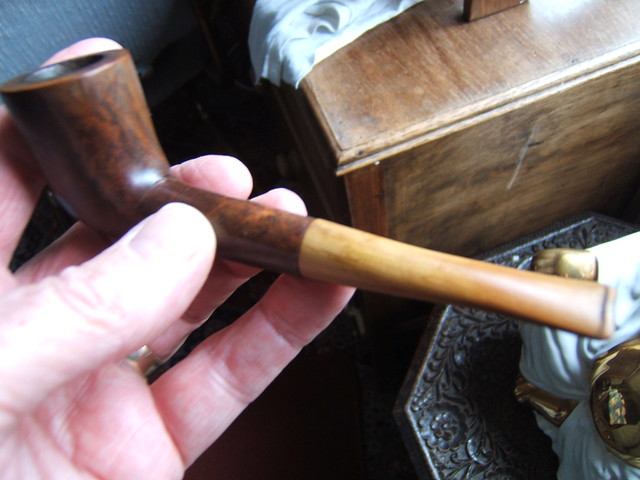An article I recently read, wax is used on smooth finished pipes and a "varnish" on rustic ones, I was researching refinishing pipes sorry I didn't save the article link.
Now I used the word "varnish" in a generic sense be the actual finish a varnish, shellac, lacquer, or urethane,
The reason I was doing research is because some rustic textured pipes I was working on. I was getting a bad end result when trying to strictly use wax as suggested,
In my woodworking experience and knowledge of finishes and solvents, I am going to say some pipes were finished using "Shellac" this derived from the fact I was able to remove the finish of the pipes I was working on with 0000 steel wool and denatured alcohol, as in shellac is alcohol soluble
Shellac is non-toxic when dry, often used on food related wooden items and children toys.
Also common wood stains will not do well on refinished pipes, it is suggested an alcohol based stain be used, not easily to come by, it was recommended use leather shoe dye which is basically an alcohol based stain. (Dye not shoe polish)
Common stain you buy for other common woodwork is oil or mineral spirit based, it will soak into the briar and may leave residue which may re-surface when smoking the pipe. alcohol based stain will not, the alcohol carrying agent will help apply the pigment and "flash" completely leaving no oil residue.

